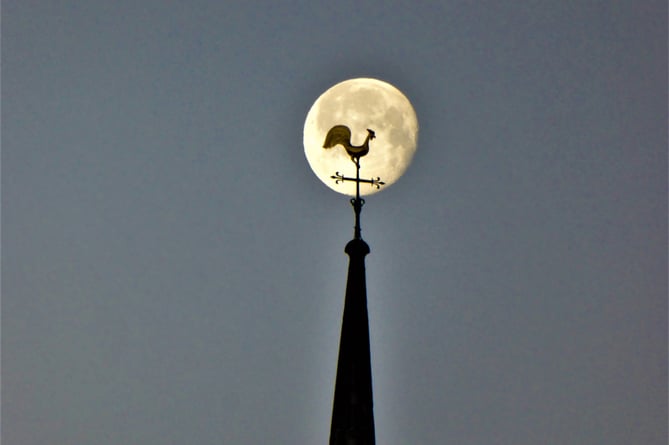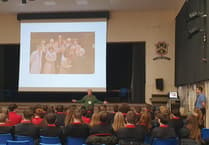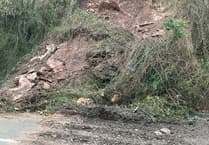A SCULPTOR who saved an iconic church spire cockerel from the scrapheap has captured an amazing shot of it silhouetted by the Wolf Moon.
The cockerel on the top of St Mary’s Church spire in Monmouth is one of only two known to survive made by John Rudge of Ross-on-Wye.
Hit by lightning and badly damaged in the early 2000s, the 230-year-old copper sculpture was tracked down by sculptor Phil Chatfield sitting in bits in a workshop bin.
The ’unstable’ 200-foot-high church spire dating back to 1743 was restored in 2010, and although the architect had wanted to place a smaller new cockerel on top, Phil ensured the original was repaired and reinstated on its perch.
Made in 1792 of Swansea copper, the only other John Rudge cockerel he has tracked down is the one atop the spire of St Giles church in Goodrich, although that one has lost its legs and wings.
The same Swansea copper was used to sheath the hulls of ships like Nelson’s HMS Victory which prevented weed growth on the hulls to streamline them and proved a great help at the battle of Trafalgar in 1805, three years after the Admiral visited Monmouth with Lady Hamilton.
After the lightning strike, the cockerel was taken down from the top of the spire by steeplejacks and taken to a workshop in Somerset.
Phil tracked him down sitting in bits in the bin just in time to stop it being scrapped and brought it back to Wales over the old Severn Bridge in his Landrover, propped up in his passenger seat "so he could see the view".
The cockerel was later taken for restoration to a Swansea specialist and rebuilt there before ’crowing’ once again from his lofty perch.
He was also regilded with gold leaf funded by donations given at the funeral of Philip Mathew of Glendower Street, a former schoolmaster of Monmouth School who had been Phil’s former housemaster in Weirhead House in the 1970s.
The sculptor, who lives in Monmouth and took the moon pic at 8am from St James’ Square, said: "I am proud to say that without my endeavour Monmouth would have lost a key character of the town forever, namely the St Mary’s church cockerel. To think that he has stood over the town since 1792.
"What has that cockerel seen? It certainly heard Emma Hamilton sing Rule Britannia when Nelson and Emma stayed at the Beaufort Hotel in August 1802.
"And even Charles Rolls flying his balloon ’Midget’ from the Mayhill gas works in the early 1900s.
"Then the coming, and the going, of the railways and eventually the arrival of the dual carriageway.
’’Sometime in its existence it had been shot through its tail. A small patch is testimony to that.
"Long may the cockerel continue to grace the spire of St Mary’s church in Monmouth. You are lucky to have him! He is something to crow about."




